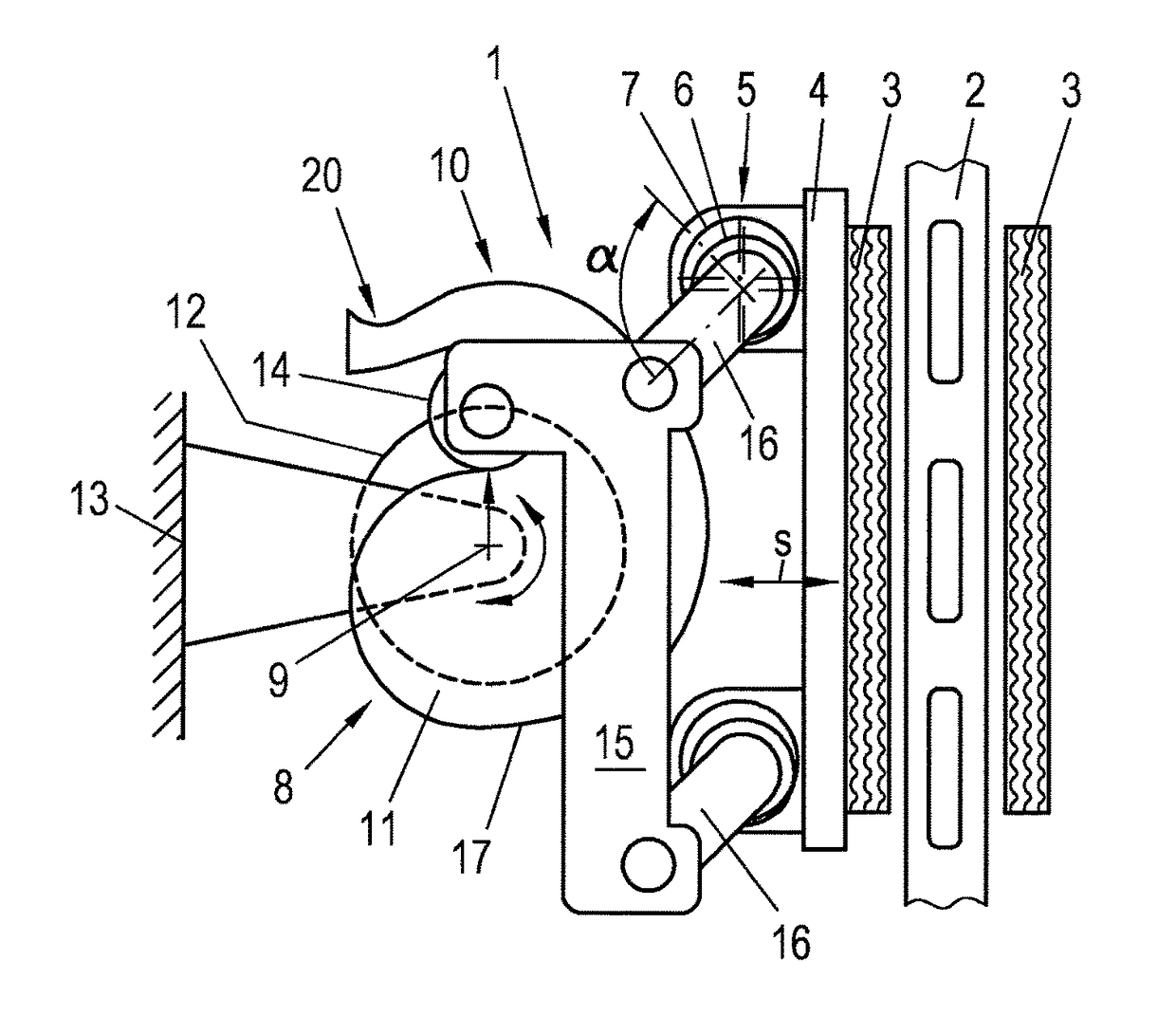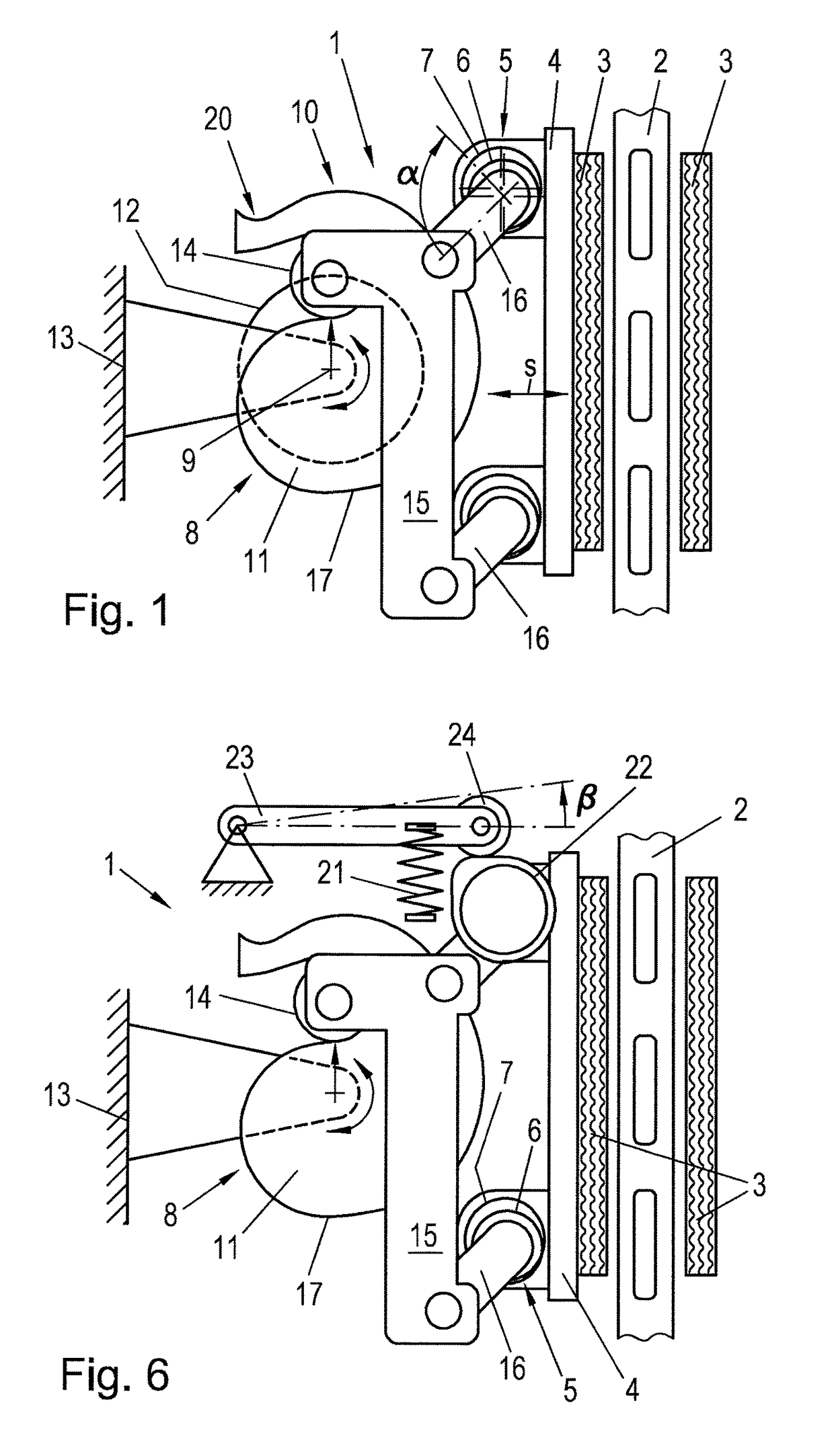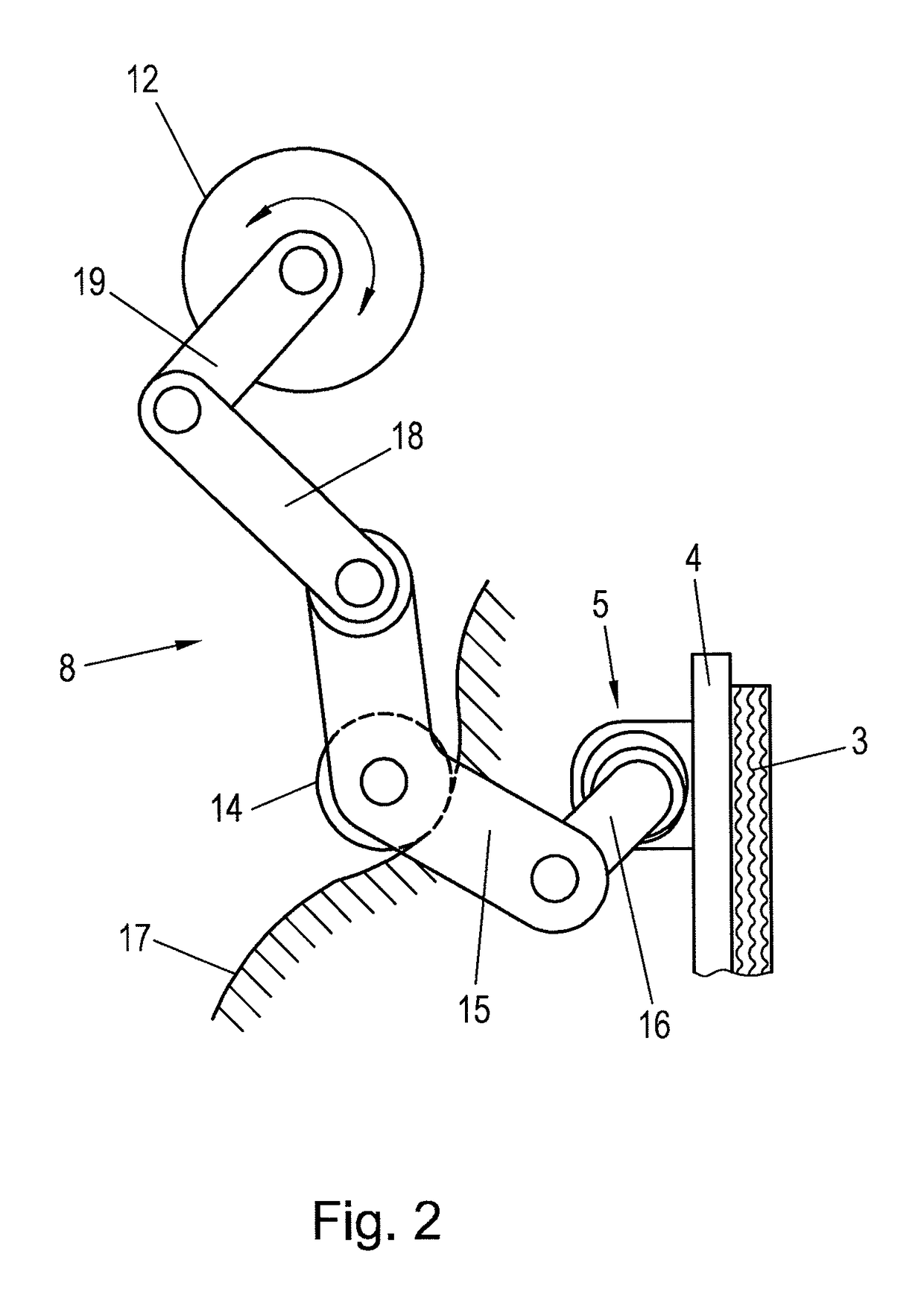Electrically actuated friction brake
a friction brake and electric actuator technology, applied in the direction of actuators, brake actuating mechanisms, axially engaging brakes, etc., can solve the problems of high cost pressure, overdimension, and inability to optimally utilize electric actuators, so as to reduce the attainable actuation time and keep the friction brake inexpensive
- Summary
- Abstract
- Description
- Claims
- Application Information
AI Technical Summary
Benefits of technology
Problems solved by technology
Method used
Image
Examples
Embodiment Construction
[0013]Embodiments of the present invention seek to reduce the attainable actuation times of an electrically actuated friction brake and simultaneously to keep the friction brake inexpensive.
[0014]According to embodiments of the invention, for braking, the actuation device is driven by a spring and is held open by an electrical actuator, so that the spring actuates the friction brake in case of a power loss, wherein a first transmission element, that is connected to the brake pad, and a second transmission element with an elevation curve are provided and a coupling element is provided on the first transmission element, wherein a follower element is arranged on the coupling element that follows the elevation curve under the action of the spring for actuating the first transmission element. The second transmission element can supply much of the transmission required in the actuation device, whereby the electrical actuator is relieved. Due to the additional transmission of the second tr...
PUM
 Login to View More
Login to View More Abstract
Description
Claims
Application Information
 Login to View More
Login to View More - R&D
- Intellectual Property
- Life Sciences
- Materials
- Tech Scout
- Unparalleled Data Quality
- Higher Quality Content
- 60% Fewer Hallucinations
Browse by: Latest US Patents, China's latest patents, Technical Efficacy Thesaurus, Application Domain, Technology Topic, Popular Technical Reports.
© 2025 PatSnap. All rights reserved.Legal|Privacy policy|Modern Slavery Act Transparency Statement|Sitemap|About US| Contact US: help@patsnap.com



